2005
Hydrogen Fuel Cars 2005
This is the next section of hydrogen cars down through history. In 2005, there were 20 different hydrogen car models that the manufacturers rolled out before the public eye. Yes, indeed 2005 was a good year for hydrogen cars and one of the most prolific years to date.
2005
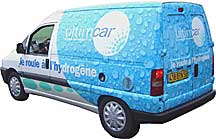 |
The Ultim Car is a bi-fuel gasoline-hydrogen vehicle converted from a gasoline-only vehicle by H2 Développement of France. The Ultim Car is a demonstration project in partnership with the HEET platform. |
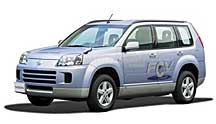 |
The 2005 Nissan X-Trail FCV debuted in December and is both a hybrid electric and hydrogen vehicle. The 2005 version of the Nissan X-Trail FCV was the first version to contain a fuel cell manufactured solely by Nissan. |
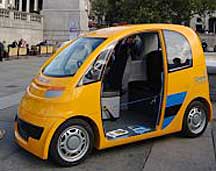 |
The Microcab H4 is a small town car, developed in the United Kingdom, and powered by hydrogen fuel cell. The vehicle was developed by Microcab in conjunction with Coventry University and Delta Motorsport. |
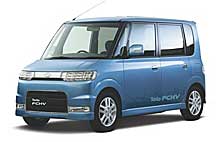 |
The Daihatsu Tanto FCHV is a multi-purpose vehicle (MPV) based upon the Move FCV-K2. The Daihatsu Tanto FCHV’s fuel cell stack was developed by Toyota and appeared n the Tokyo Auto Show in 2005. |
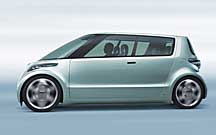 |
The Toyota Fine-T (Fine-X in some markets) made its U. S. debut at the 2006 North American International Auto Show in Detroit, Michigan. The Toyota Fine-T has small electric motors attached to all four wheels as a way to distribute its energy equally. |
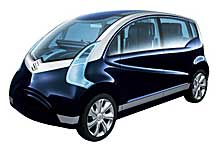 |
The Suzuki Ionis mini made its first appearance in October 2005 at the Tokyo Auto Show. A multi-purpose vehicle, the Suzuki Ionis is only 134-inches in length, yet can seat four adults comfortably. |
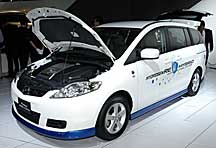 |
The Mazda 5 Premacy is a hydrogen car and a hybrid vehicle as well. The Mazda 5 Premacy uses a dual-fuel rotary engine that can run on either gasoline or compressed hydrogen fuel. |
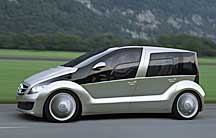 |
The DaimlerChrysler Mercedes F600 Hygenius is not only a hydrogen vehicle but a mobile power station as well. The Mercedes F600 Hygenius is equipped with a 240v outlet and is able to power two houses. |
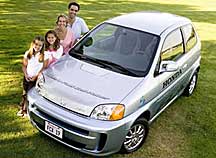 |
The 2005 Honda FCX has several improvements over the 2004 model year. For instance, the 2005 Honda FCX gets 20-percent better gas mileage and achieves a 33-percent increase in horsepower than the previous year’s model. |
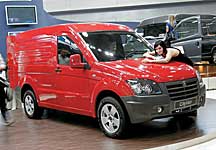 |
The GAZ Hydrogen Van is a dual-fuel vehicle running on either hydrogen or gasoline. The GAZ Hydrogen Van 9-seater was funded by the Moscow Power Energy Institute, a Russian technical university. |
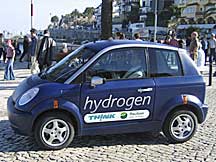 |
The Think Nordic Hydrogen (or Th!nk as they like to spell it) was once associated with the Ford Motor Company. However, now the Think Nordic Hydrogen car is part of Norway’s HyNor hydrogen highway program. The car is powered by a Hydrogenics fuel cell. |
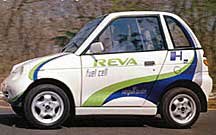 |
The Reva FCV was developed by the REVA Electric Car Company (RECC) and Indian Oil Corporation (IOC) as India’s first fuel cell vehicle developed for fleet use. The 2-seat Reva FCV uses a Hydrogenics 5 kw fuel cell. |
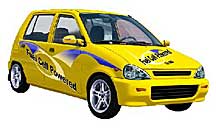 |
The Agni REAL FCV was Malaysia’s first fuel cell vehicle developed to be street ready. The 4-seat Agni REAL (Renewable Energy Automobile) FCV developed in Kuala Lumpur: uses a 15 kw PEM fuel cell plus ultracapacitors for electrical storage. |
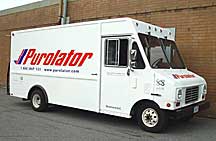 |
The Purolator Fuel Cell Hybrid Electric delivery van was a demonstrator project funded by the Canadian Transportation Fuel Cell Alliance (CTFCA). The Purolator hydrogen fuel cell van was a collaborative effort between Hydrogenics and Enova to integrate the hydrogen and hybrid system in hopes on one day replacing some of the diesel-powered vehicles that Purolator typically uses. |
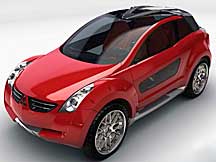 |
The Mitsubishi Nessie is an Italian-Japanese collaboration that combines the mythology of the Loch Ness Monster, with the styling of the Italians and the functionality of the Japanese automaker. The Mitsubishi Nessie is a 5-seat, 4X4 vehicle using a hydrogen-powered internal combustion engine. |
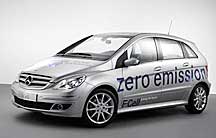 |
The DaimlerChrysler Mercedes-Benz F-Cell B-Class has more power and range than the A-Class hydrogen vehicle. The Mercedes-Benz F-Cell B-Class uses a 100 kw electric motor with a range of over 250 miles. |
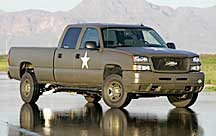 |
The modified Chevrolet Silverado Hydrogen Military Truck was unveiled on April 1, 2005, not as an April Fool’s Day joke, but rather as a serious attempt by GM and the U. S. Army to introduce to the Armed Forces the first fuel cell powered truck. The vehicle was introduced at Honeoye Falls, New York, just outside of Rochester by Senator Hillary Rodham Clinton. |
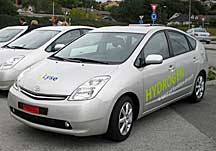 |
The Quantum Hydrogen Hybrid Prius was first introduced in February of 2005 and by March 2007, Quantum has modified over 50 fleet vehicles to run on hydrogen. The Quantum Hydrogen Hybrid Prius was built as a cost-effective method (for under $100,000) of creating hydrogen vehicles not dependent upon fuel cells. |
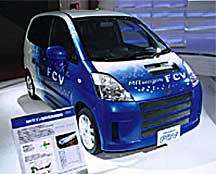 |
The 2005 Suzuki WagonR FCV was unveiled to the public in the Spring of that year. The 4-seater Suzuki WagonR FCV uses a fuel cell developed by General Motors and has a 70 MPa storage rating for its compressed hydrogen tank. |
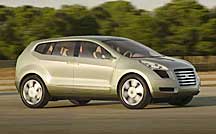 |
The GM Sequel is General Motor’s first fuel cell vehicle to boast a 300 mile range. The GM Sequel is based upon a skateboard chassis design, which means all drive train components are sandwiched underneath the floorboard, giving extra room to the passengers. |
Navigation
1807-1986 1990-1998 1999 2000 2001 2002 2003 2004 2005
2006-2007 2008-2009 2010-2011 2012-2013 2014-2015 2016-2017
Written by Hydro Kevin Kantola
Leave a Reply
You must be logged in to post a comment.